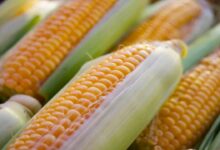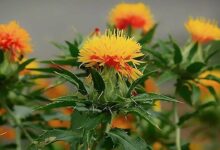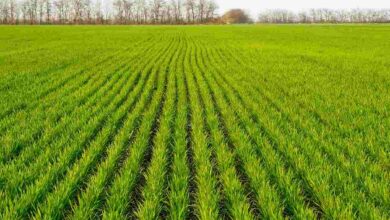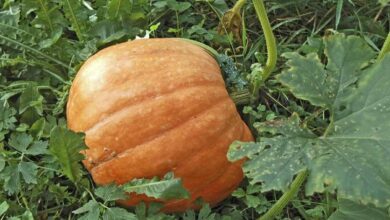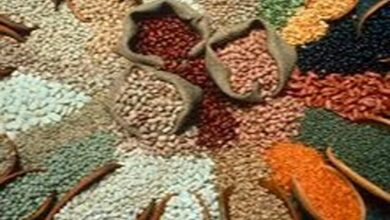Gulkhaira cultivation: Learn how farmers may benefit handsomely from growing Gulkhaira
Gulkhaira cultivation: Investing ₹10,000 on this high-yield medicinal plant may generate up to ₹50,000 with just one bigha of land. This creative and lucrative agricultural business idea is called Gulkhaira farming. Gulkhaira is a useful herb that is utilized in many medications, particularly in Unani treatments, to cure ailments affecting men, such as coughing and fever.
Flowers, leaves, stems, and seeds are among the components of the Gulkhaira plant that are in great demand and sell for a decent price. We’ll talk about how to begin and succeed with Gulkhaira cultivation in this blog article.

How to Grow Gulkhaira and Make Good Profits
Gulkhaira Cultivation: What is it?
The process of cultivating gulkhaira plants for their therapeutic properties is known as gulkhaira cultivation. The herbaceous plant Gulkhaira is a member of the Asteraceae family. It has green leaves with finely-haired edges and yellow blooms. Gulkhaira is known by its scientific name, Inula racemosa. Other names for it include Iksir-e-Jigar, Puskara, Pushkarmool, and Ishq-e-Jigar. The idea of gulkhaira cultivation has been presented before. It is native to Afghanistan and Pakistan, where it has been practiced for generations.
It has, nonetheless, lately become more well-known in India, particularly in Uttar Pradesh, where farmers have discovered it to be a lucrative and long-lasting crop.
The fact that Gulkhaira may be interplanted with other crops like wheat, mustard, and sugarcane without compromising their quality or production is one of its benefits. Farmers will be able to diversify their sources of income and make better use of the land and resources they already have.
Demand for Gulkhaira Products in the Market
The medicinal herb gulkhaira is highly sought-after because of its therapeutic qualities and uses in pharmaceuticals. A quintal can bring in up to ₹10,000, and a bigha of land can yield around five quintals, which means that each bigha might bring in up to ₹50,000 in revenue. Gulkhaira products are mostly purchased by pharmaceutical firms, which utilize them to make medications for a range of illnesses, including fever, cough, asthma, bronchitis, rheumatism, arthritis, heart disease, liver disorders, and male health problems.
Khamira Abresham Hakim Arshad Wala, Khamira Marwareed Khas, Khamira Gawzaban Ambari Jawahar Wala, and Majun Salab are well-known Gulkhaira medications. Products from Gulkhaira may also be utilized to make herbal teas, cosmetics, incense sticks, and fragrances, appealing to customers who value their health and prefer natural and organic goods.
Determine Gulkhaira’s Ideal Growing Conditions
Gulkhaira is a resilient plant that thrives in a range of climates. It does, however, have a climate that is somewhat warm with plenty of sunlight and rainfall.
For Gulkhaira to be grown, the ideal temperature range is 15°C to 25°C. Although gulkhaira may grow in a variety of soil types, it likes sandy or clay loam soils that have a pH range of 6.5 to 7.5 and are well-drained.
Choose the Correct Cultivar for High-Yield Production of Gulkhaira
To achieve high production and excellent quality of Gulkhaira goods, choosing the appropriate Gulkhaira cultivar is essential. A cultivar’s capacity to adapt to the local climate and soil conditions, resistance to pests and diseases, potential yield, the quality of the flowers, leaves, stems, and seeds, as well as market demand and price, are all important considerations.
The high-yielding cultivar K-1, which produces large, brilliant yellow blooms with a high oil content and resilience to pests and illnesses, was created by the Central Institute of Medicinal and Aromatic Plants. K-2 is an additional high-yielding variety that yields up to 5 quintals of flowers per hectare. It produces medium-sized yellow blooms with a high oil content and resilience to pests and diseases.
K-3 is a dwarf cultivar that yields up to 4 quintals per hectare of tiny yellow blooms with a high oil content and resilience to pests and illnesses. Grown by farmers in Uttar Pradesh for generations, the local variety yields up to three quintals of flowers per acre and is a traditional variety with medium-sized yellow blooms with a moderate oil content and tolerance to pests and illnesses.
Use Efficient Methods for Preparing Soil for Gulkhaira Crops
Plowing: In order to break up clods and create loose, friable soil, the area has to be plowed completely. Soil aeration and weed control are other benefits of plowing.
Leveling: To guarantee that water and nutrients are distributed uniformly, the land must be adequately leveled. Waterlogging and soil erosion are two further issues that leveling helps to avoid.
Manuring: Prior to plowing, the ground should be supplemented with 10 to 15 tons of organic manure per hectare, such as farmyard manure, compost, or vermicompost. Enhancing soil fertility and structure is made easier by manuring.
Fertilizing: Prior to plowing, the field should be treated with chemical fertilizers at a rate of 100: 50: 50 kg per hectare, for example, urea, diammonium phosphate (DAP), and muriate of potash (MOP). Fertilizing aids in giving plants vital nutrients, including potassium, phosphate, and nitrogen.
Irrigation: To hydrate the soil and promote seed germination, the ground should be thoroughly watered after plowing.
Top Techniques for Growing and Spreading Gulkhaira
When to plant: November is the ideal month to plant Gulkhaira seeds, after the harvest of kharif crops like rice, maize, or millets. The best temperature and moisture levels for seed germination and plant development are guaranteed when seeds are sown in November.
Seed rate: Five kilograms per hectare is the suggested seed rate for Gulkhaira farming. Before planting, the seeds should be treated with fungicides at a rate of 2g/kg of seeds, such as captan or thiram, to avoid fungal diseases.
Technique for sowing: The seeds should be drilled or dispersed in rows or beds at a depth of 1 to 2 cm. The broadcasting technique involves distributing the seeds evenly throughout the prepared area. By creating channels, or furrows, in the ground, the drilling technique allows seeds to be sown at regular intervals along these furrows.
The ideal distance between plants and rows for Gulkhaira cultivation is 30 cm by 30 cm, respectively. This spacing provides enough room for weed management, air circulation, sunshine penetration, and plant development. In line sowing, rows are made with a spacing of 30 to 45 cm, and seeds are sown inside the rows at a depth of 1 to 2 cm and a spacing of 15 to 20 cm.
Techniques for Managing Nutrients to Increase Gulkhaira Yield
Hardy plants like gulkhaira may grow in a variety of soil types and temperatures. It is advised to use well-decomposed farmyard manure or compost, apply nitrogen fertilizer in two doses, apply phosphorus fertilizer at 30–40 kg, and apply potassium fertilizer at 20–30 kg in order to optimize output and quality. In addition, the recommendations of soil tests should be followed when applying micronutrients such as zinc, boron, iron, and manganese. By using these techniques, the plant’s development and quality are guaranteed, as are its production and quality.
Water Management and Irrigation in Gulkhaira Agriculture
Gulkhaira is a drought-tolerant plant that requires little to no watering to thrive. However, it is advised to provide enough water throughout crucial phases, including germination, blooming, and seed production in order to guarantee optimum growth and development.
The following are some irrigation and water management pointers:
Use sprinkler irrigation or drip irrigation to save water and stop the development of weeds.
Depending on the soil moisture content and meteorological circumstances, water the crop every ten to fifteen days.
Steer clear of overwatering and waterlogging, since they may lead to fungal infections and root rot.
Keep the soil between 60 and 70 percent wet throughout the crop cycle.
Controlling Pests and Diseases in Gulkhaira Plants
Aphids: are tiny sucking insects that feed on plant material, causing leaf curling and yellowing. Additionally, they may spread viral illnesses. Apply neem oil or insecticidal soap, or employ biological control agents like ladybugs or lacewings, to manage them.
Cutworms are caterpillars that consume young plants’ leaves, stalks, and roots, then chop them off at the base. They spend the day hiding under the ground and are active at night. You may handpick them, use spinosad or Bacillus thuringiensis (Bt) to manage them, or utilize pheromone traps.
Powdery mildew is a fungus that causes white, powdery spots on stems and leaves. It has an impact on plant development and decreases photosynthesis. Use resistant cultivars or use neem oil, sulfur, or potassium bicarbonate to suppress it.
Root rot is a fungal disease that makes roots deteriorate and droop. Soil-borne infections, excessive irrigation, or inadequate drainage are the causes of it. Use fungicides, crop rotation, or better soil drainage and aeration techniques to manage it.
Gulkhaira Harvesting and Post-Harvest Management
When gulkhaira seeds begin to break and become brown, it’s time to harvest them. Harvesting takes place between April and May, depending on the weather and the time of year you plant. There are two approaches: mechanical and manual. When harvesting by hand, plants are chopped, gathered in bundles, threshed, and the seeds are separated from the chaff.
In mechanical harvesting, the crop is chopped, threshed, and cleaned all at once using a combination harvester. After harvesting, the material is dried in a dryer or the sun. In order to ensure safe storage and transportation, post-harvest management entails drying the collected material until the moisture level drops to 10–12%. To prevent overheating or overdrying, this may be done in the sun or with a dryer set to uniform drying.
After drying, the material is cleaned to get rid of any impurities, including weeds, stones, dust, and filth. Size, form, color, and quality are taken into consideration while grading the cleaned material. The graded material is tagged with the name, variety, weight, date, and quality of the material and packaged in hygienic, dry, and moisture-proof bags or containers. The material is kept out of the reach of insects, rodents, birds, and dampness in a cold, dry, and well-ventilated area. Periodic inspections are carried out to look for indications of damage or infestation.
Processing Gulkhaira Products with Additional Value
It is possible to transform Gulkhaira items into value-added goods with increased demand and market value. Among these is Gulkhaira oil, which is utilized in massage, aromatherapy, cosmetics, and medications due to its anti-inflammatory, antibacterial, and analgesic qualities. Gulkhaira powder is used in herbal remedies, vitamins, cosmetics, and food items. It is made by grinding dried flowers, leaves, stems, or seeds. Gulkhaira powder possesses antifungal, bacterial, and antioxidant qualities.
Gorgeous hollyhock blossoms in pink
Gulkhaira extract, which is made by boiling or soaking dried flowers, leaves, stems, or seeds, is used in herbal remedies, dietary supplements, cosmetics, and food items because of its anti-diabetic, anti-cancer, and anti-obesity qualities. Gulkhaira tea is used for health and wellbeing; when brewed in hot water, it has calming, relaxing, and cleansing properties.
Create Marketing Plans for Products Derived from Gulkhaira
Products developed from gulkhaira have a lot of promise because of its therapeutic and cosmetic uses, both in India and elsewhere. Marketing strategies such as target market segmentation, market research, unique selling propositions, brand name and logo creation, appealing packaging design, advertising through multiple channels, distribution network establishment, and customer loyalty and retention should be put into practice in order to successfully tap into this market.
Understanding market trends, opportunities, threats, competitors, and customer feedback are some of the key components of these strategies. Other ideas include developing a unique selling proposition, attractive packaging and labeling, promoting Gulkhaira-derived products through a variety of channels, setting up a distribution network, and offering high-quality products at competitive prices along with after-sales support.
Gulkhaira Cultivation’s Cost Analysis and Financial Planning
Alhagi maurorum, another name for gulkhaira, is a medicinal plant that is highly sought after by the pharmaceutical sector. It is used to cure a variety of illnesses, including fever, coughing, and issues related to male health, especially in Unani treatments. Without the need for extra land or inputs, gulkhaira farming is a lucrative and sustainable agricultural business concept that may be combined with current crops.
In the market, a quintal of Gulkhaira may bring in up to ₹ 10,000. A single bigha of land may yield around five quintals of Gulkhaira, with revenues of up to ₹ 50,000 per bigha. The primary cost of the investment is the seeds, which are reusable for next seasons. November is when the planting starts, and April and May are when the harvesting happens. The plant naturally sheds its leaves and stems as it ages, making gathering easier.
A financial analysis and planning process for Gulkhaira cultivation must take into account the price of seeds, labor, marketing, transportation, and other expenses, as well as sales income. For every bigha of land, the whole cost of Gulkhaira cultivation is around ₹ 7,500–10,000, whereas the total income is approximately ₹ 50,000. In comparison to other crops, this suggests a net profit of around ₹ 40,000–42,500 per bigha of land, or a 400–500% return on investment (ROI).
The Gulkhaira Industry’s Regulatory Compliance and Quality Standards
The Indian Council of Agricultural Research (ICAR) suggests that Gulkhaira cultivation follow Good Agricultural Practices (GAP) guidelines. These include using organic manures and biopesticides, avoiding chemical fertilizers and pesticides, gathering fallen leaves, stems, and flowers, and drying them in shade. Other guidelines include choosing high-quality seeds from certified sources, preparing land for soil fertility, sowing seeds in November and harvesting them in April or May.
Good Manufacturing Practices (GMP) guidelines should be followed when processing Gulkhaira. These guidelines include cleaning raw materials, crushing or grinding plant parts, testing the product for heavy metals, moisture content, microbial load, and active ingredients, packaging the product in appropriate containers with labels, and keeping it out of direct sunlight.
Good Trade Practices (GTP) guidelines should be adhered to by Gulkhaira traders. These guidelines include getting a license from the Drug Controller General of India (DCGI) that is currently valid, confirming the product’s source, quality, and quantity before purchasing or selling, keeping accurate records of all transactions and invoices, transporting the product in a safe and hygienic manner, and abiding by all applicable laws and regulations.
In summary
Taking the risk of cultivating Gulkhaira seems to be a calculated route to financial gain. Aloe Vera’s large output and medical value make it a profitable venture. This hardy plant has economic potential that may be realized with the right growing methods and a grasp of market dynamics, leading to both financial and health advantages.
